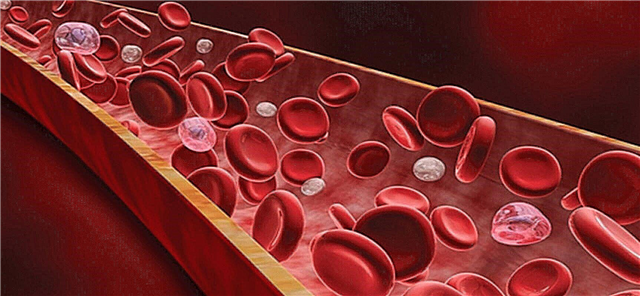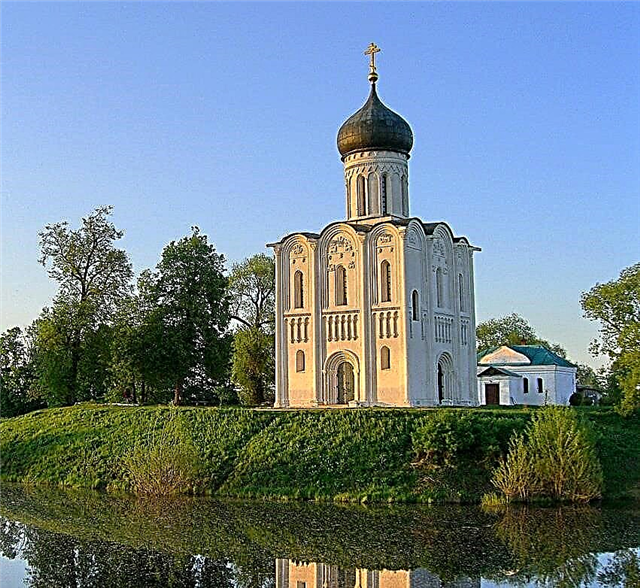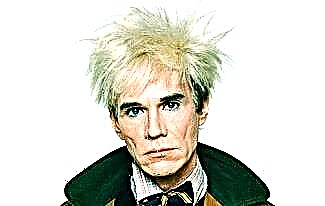The Suzdal Kremlin is the heart of the ancient city, its cradle and the starting point of the history of Suzdal. It keeps behind powerful walls the memory of important events in the history of Russia, many secrets and riddles, which are being solved by more than one generation of historians. The artistic and historical value of the Kremlin ensemble in Suzdal is recognized as a cultural heritage of Russia and UNESCO. Central Kremlin Street, like a "time machine", opens the way for tourists to the millennial past of Russia.
Excursion into the history of the Suzdal Kremlin
On a hill in the bend of the Kamyanka River, where the museum complex "Suzdal Kremlin" appears today in all its glory, the city of Suzdal was born in the 10th century. According to the description from the chronicles, at the turn of the XI-XII centuries, fortress earthen ramparts were erected here with a high log fence rising on them, completed with a palisade of pointed wooden stakes. There were towers and three gates along the perimeter of the fortress wall.
Old pictures depict fortress walls surrounded by moats with water on three sides - south, west and east. Together with the river, which protected from the north, they blocked the path of the enemies. From the 13th to the 17th centuries, a cathedral, buildings for the residences of the prince and bishop, buildings for the prince's retinue and servants, several churches, a bell tower and many outbuildings grew behind the fortress wall.
A fire in 1719 destroyed all the wooden buildings of the Kremlin, up to the fortress walls. Preserved monuments of Russian architecture, built of stone, which today appear before contemporaries in all their glory. The top view of the Suzdal Kremlin at a glance presents all its attractions, amazingly blended into the surrounding landscape.
Cathedral of the Nativity
The Cathedral of the Nativity of the Virgin, dating back to 1225, is the oldest stone structure on the Kremlin territory. It was erected on the foundations of a collapsed six-pillar one-domed stone church built under Vladimir Monomakh at the end of the 11th century. The grandson of Yuri Dolgoruky, Prince Georgy Vsevolodovich, built a stone five-domed church dedicated to the Nativity of the Virgin.
Blue as the sky, the onion domes of the cathedral are dotted with golden stars. Over the centuries, the appearance of the facade has changed. The lower part of the cathedral, decorated with stone carvings, lion heads carved from stone, female masks on portals and elaborate ornaments, has been preserved since the 13th century. The 16th century brickwork is visible behind the arcature belt.
Photos inside the cathedral are striking with frescoes preserved from the 13th century on the walls, ligature of floral ornaments on doorways, skillful utensils, and a golden openwork iconostasis with icons of saints.
The southern and western “golden gates” are a real treasure. They are trimmed with scarlet copper sheets with elaborate patterns, gilded paintings depicting scenes from the Gospel and plots with the deeds of the Archangel Michael, who patronizes the prince's military campaigns. The gates are opened with ancient massive handles in the form of rings inserted into the mouths of lion heads, which are of historical and artistic value.
The Nativity Cathedral is interesting with the necropolis of famous personalities of Ancient Rus - the sons of Yuri Dolgoruky, bishops, princes from the Shuisky dynasty and high-ranking boyars.

Cathedral bell tower
The Nativity Cathedral has an octahedral bell tower topped with an imposing tent. The belfry, built of stone in 1635, remained the tallest structure in the city for a long time. The top of the octahedron attracts attention with the form of chime arches and chimes of the 17th century. By the end of the century, a church was built inside the bell tower, connected by a gallery and passages with the premises of the episcopal chambers.
We recommend looking at the Tula Kremlin.
Today, inside the medieval belfry, it is possible to see the country's only wooden Jordan canopy of the 17th century.
Wooden Nikolskaya Church
The Nicholas wooden church of the 18th century, built like a rural hut and moved from the village of Glotovo, Yuryev-Polsky district, fits perfectly into the complex of the Suzdal Kremlin. The unusual church structure, built of logs without a single nail, is of interest to tourists. The photographs show its slender appearance - the clear proportionality of the log cabins, the carefully hewn gabled roof and the delicate wooden bulb topped with a cross. An open gallery surrounds the church on three sides.
A unique example of Russian architecture is installed on the square of the Bishops' Court, where the wooden Church of All Saints previously stood, which was burnt down by a fire in the 18th century. Today Nikolsky Cathedral is an exhibit of the Suzdal Museum of Wooden Architecture. Its external inspection is included in the program of the excursion to the Kremlin sights.
Summer Nikolskaya Church
In the first half of the 17th century, a summer church was built in honor of St. Nicholas the Wonderworker near the Nikolskie Gates overlooking the Kamenka River. The one-domed shrine of a cuboid form is completed by a helmet-shaped dome with a cross. At the bottom of the cube, the corners are trimmed with semi-columns. A triad of arches with pediments leads to the temple. The second quadrangle is trimmed with oblong checkers. From it rises an octahedral bell tower with pilasters in the corners and three rows of decorative depressions in the facade - semicircular and octahedral. Behind them are the arches of the bell tower, surrounded by a cornice on top, decorated with a belt of pale green tiles. The end of the bell tower is an original concave tent with round windows. The Suzdal masters called this form of the tent a pipe.

Nativity of Christ Church
The Winter Nativity of Christ Church is located on the eastern side of the Suzdal Kremlin next to the Nikolskaya Church, completing the traditional Orthodoxy complex of two seasonal churches. The Nativity of Christ Church was built in 1775 from bricks. It is a main building with an attached pentahedral apse, a refectory and a vestibule.
The gable roof became the covering of the main church and the refectory. Its culmination was a carved drum topped with an onion with a cross. The church facades are distinguished by the skillful decoration of pilasters, cornices and friezes. The arched windows are decorated with decorative stone frames, and on the pediment of the vestibule, an ancient painting about the birth of Christ attracts attention.
Church of the Assumption of the Blessed Virgin
The Assumption Church of the 17th century is located near the northern Kremlin gates, formerly called Ilyinsky. It was built by the Suzdal princes on the site of a burnt-out wooden church in two stages, which was reflected in the architecture.
The lower part is a quadrangle with window frames characteristic of the 17th century. The upper part is an octagon with platbands on the windows in the form of spiral curls with a circle in the center. Such decor is inherent in the Petrine era - the first half of the 18th century. The temple is completed by a unique two-tier drum with a volumetric green dome topped with a miniature dome with a cross. The church facades stand out in bright red, set off by white pilasters and platbands, which gives it a festive and elegant look.
Nearby is the restored hipped-roof bell tower. Looking at what the architectural ensemble of the Church of the Assumption of the Blessed Virgin Mary looks like, we find features of the Moscow Baroque style, unusual for Suzdal. The interior is of interest with the restored five-tiered iconostasis with modern paintings. Since 2015, the relics of St. Arseny of Suzdal have been kept here, helping to heal childhood diseases.
Bishops' chambers
The western side of the Suzdal Kremlin is occupied by the Bishop's Court with residential and auxiliary buildings of the 17th century, united by covered galleries, a network of passages and secret staircases. Of greatest interest is the Cross Chamber, which in the old days was intended to receive high-ranking guests. Its walls are hung with portraits of kings and high clergy. The skilfully executed bishop's throne, tiled stoves, church furniture and utensils are admired. To get to the Cross Chambers, you can use the main entrance located near the western portal of the Nativity Cathedral.
Today, in 9 rooms of the Bishops' Chambers, exhibits of the history of Suzdal are presented, arranged in chronology from the XII century to the present day. On the excursion, they tell fascinating stories about who lived in Suzdal and the Kremlin. At the Bishop's Court, the building of the Annunciation Church with a refectory, recreated in the appearance of the 16th century, attracts the eye. In the temple you can see 56 rare icons of the 15th-17th centuries and learn the fascinating stories of the Vladimir-Suzdal monasteries.
Interesting facts about the Suzdal Kremlin
- The area where the buildings of the Kremlin were erected was first mentioned in chronicles dating back to 1024.
- The earthen Kremlin ramparts have survived since the time of Vladimir Monomakh due to the use of "gorodnya", which is an internal structure made of wood, processed with clay from all sides.
- The premise of the hall in the Cross Chamber for receiving guests is 9 meters high and has an area of more than 300 square meters, built without a single pillar.
- On the dial of the chimes of the cathedral bell tower there are no numbers, but the drop caps are applied according to the Old Slavonic tradition, with the exception of the letter "B", which personifies God.
- The districts are announced by chimes every quarter of an hour. The work of the watch was monitored by workers called watchmakers.
- 365 gold stars are scattered over the dome of the Nativity Cathedral, symbolizing the days of the year.
- The construction of the ensemble of the Bishops' Chambers lasted 5 centuries.
- In 2008, the Kremlin historical objects became the scenery for filming the film "Tsar" by director Lungin.
- Nikolskaya wooden church was chosen for filming the episode of the wedding in the film adaptation of Pushkin's story "Snowstorm".

Information for tourists
Opening hours of the Suzdal Kremlin:
- Open Monday to Friday from 9:00 to 19:00, Saturday until 20:00, closed on Tuesday and last Friday of the month.
- Inspection of museum expositions is carried out: Monday, Wednesday - Friday, Sunday - from 10:00 to 18:00, on Saturday it is continued until 19:00.

The cost of visiting museum expositions with a single ticket is 350 rubles, for pupils, students and pensioners - 200 rubles. Tickets for a walk around the Suzdal Kremlin cost 50 rubles for adults and 30 rubles for children.
Kremlin address: Vladimir region, Suzdal, st. Kremlin, 12.









